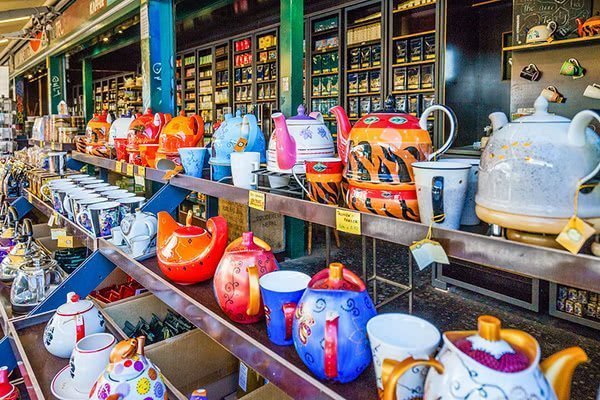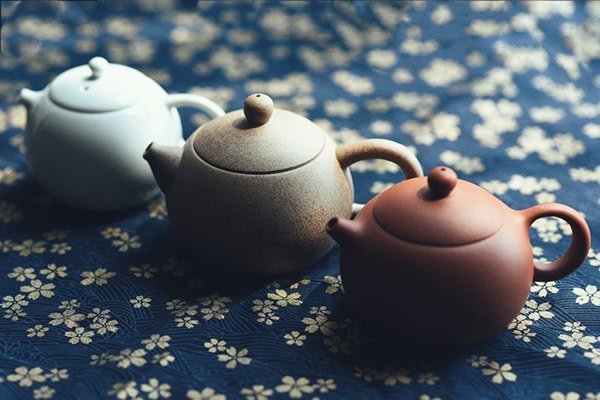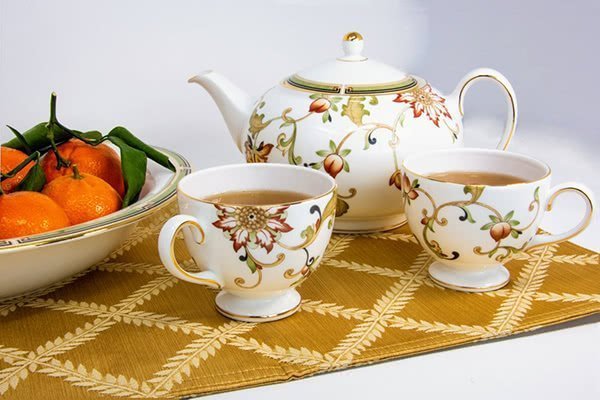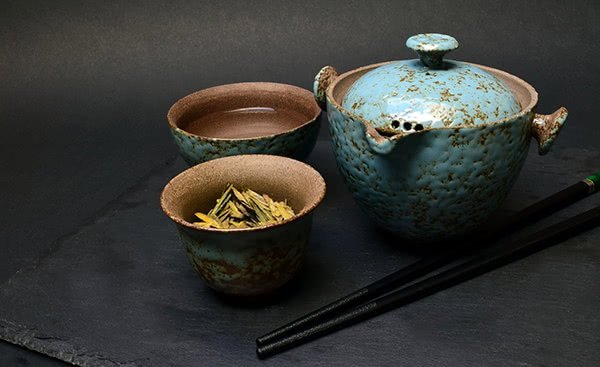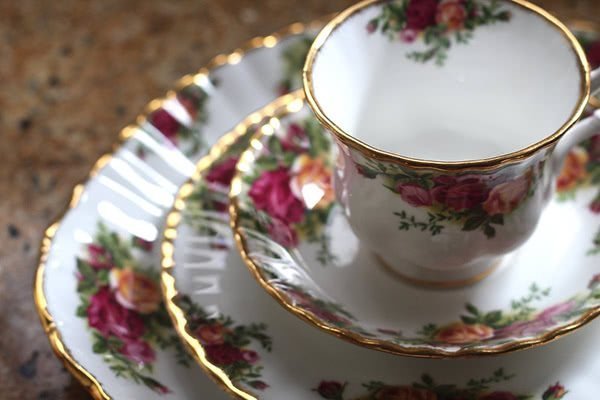Last Updated on 05/21/2020 by Desmond
If you love tea, I guess you got a set of ceramic teaware. But do you remember when buying, have you ever confused with the pottery and the porcelain? Although we called them both ceramics and look similar, they are not the same at all.
Ceramic is the collectively called of pottery and porcelain. Both of them have a long history, but pottery may be much longer. They made from different materials and some gaps in the brewing tea performance. To pick the fittest teaware for your tea, it’s best to understand them well.
CONTENT
Pottery Teaware
Pottery is made from clay. Archaeologists thought the hominid found it in the extinguished bonfire by accident; it may be one of the earliest human-created tools.
The clay is sticky and easy to shape. The most convenient is it can be fired at a low temperature, about 600℃ to 1200℃. Most original pottery without any decorated and shows an original earthy color.
Have a careful look at it or touch. You will find there are full of tiny pores on the surface, making the pottery has excellent water absorption and is suitable for storing food.
Tea culture is as old as Chinese history, so does the pottery. With the times developing, people learned how to glaze the pottery to make it more delicacy and better seepage performance. The pottery teaware can be glazed or not, but people usually prefer the original appearance.
The famous pottery teaware we know is Yixing teaware, which made from a unique type of clay called purple sand. This type of teaware is red, without the glaze. And it has outstanding heat-shielding performance, which helps extract the tea taste better, so popular in the tea lovers.
Porcelain Teaware
It’s still not clear what time did people begin to use porcelain. It positively later than the pottery because it needs to process in a more advanced kiln, which can provide a higher temperature up to 1200℃ to 1400℃.
Porcelain made from a white clay called kaolin; the original products are white. It can be made quite thin and has excellent light-admitting, and got a better airtightness than pottery. Therefore, people love to brew the light-tasting tea, such as green tea with the porcelain teaware.
The porcelain teaware must be glazed before firing. The glazes can easily combine with it during firing and form a smooth and glass-like surface. The craftsmen can do various paintings on it. The most famous is blue and white porcelain, which glazed with a special China blue.
Porcelain teaware is much famous than the pottery one. That didn’t mean porcelain was better for tea, that’s because it was brought to the British with tea in the early time and spread to more countries. In China and Japan, people seem to prefer the pottery one.
Pottery VS. Porcelain
Since pottery and porcelain are different materials, and what’s different between the teaware they made?
Appearance
Most of the time, the pottery teaware does not have a glazed surface, shows red, and look primitive. People love this primitive style, so the craftsmen do more. They even shape the teaware in irregularity a deliberately, to show more original feeling.
Sometimes, the pottery teaware also has been glazed. But the material of the glaze is different from the porcelain. It was sintering with a type of low-temperature glaze, to get a color appearance and higher airtightness. But this glaze is not as smooth as the porcelain, the glossiness and saturability are also lower.
Smoothness
The pottery teawares made from clay are porous, but it would not let the tea leak. These tiny pores provide high heat-shielding performance, not easy to burn your fingers, and can keep the tea warm. And the porcelain teaware made from kaolin does not.
There is a pro, and there is a con. Because of these tiny pores, pottery teaware has a rough touch feeling, not as smooth as the porcelain one, even though it was glazed. The biggest problem is hard to clean. The tea’s taste often residue in the pores and grew the tea stain. So the tea lovers only use one set unglazed pottery teaware for brewing one type of tea.
Hardness
The pottery teaware was firing at a low temperature, and the body has not sintered completely, so the hardness is low. When knocking it with a finger, the sound was deep. A steel knife can even scratch some pottery teaware surfaces.
And the porcelain teaware was hard because it has been high-temperature firing, the body was sintered completely. Make a clear sound when knocking, and hard to scratch it by a knife.
But that does not mean they are strong, to ceramic teaware, both pottery and porcelain are fragile, a sharp crash may break it.
Transparency
Even though make the pottery teaware in a thin body, it still can not obtain the translucency features. But in the porcelain case, no matter how thick it is, and it can let the light through vaguely. Some high-grade porcelain teaware, which with a thinness wall, looks almost transparent.
Weight
Kaolin is denser than clay, and the porcelain teaware without any tiny pores in the wall, so it is lighter than the pottery one in the same volume.
How To Choose Ceramic Teaware, Pottery Or Porcelain?
Now, you may already clear about the difference between pottery and porcelain teaware. But which one it the best for your tea experience?
That depends on what type of tea you are going to enjoy.
Appearance aside, different people have different ideas on it. The most significant factor affecting our tea experience is the different performance on brewing between pottery and porcelain teaware.
The porcelain teaware will never make you disappointed. It got a reasonable price and easy to clean. It takes little effect on extracting the tea infusion, whether helpful or not. One particular advantage is the white surface can help you see the tea color clearly, it’s one crucial index that judges tea quality.
But if you want a better tea experience, the pottery teaware may be a suitable choice. Especially brewing the dark tea like Pu-erh, which need more time heating to extract the taste; or some types of tea with a strong scent. The excellent heat preservation properties of a clay teapot can help to do a great job of it. That’s why most old tea lovers prefer to choose a set of Yixing purple sand teaware.
